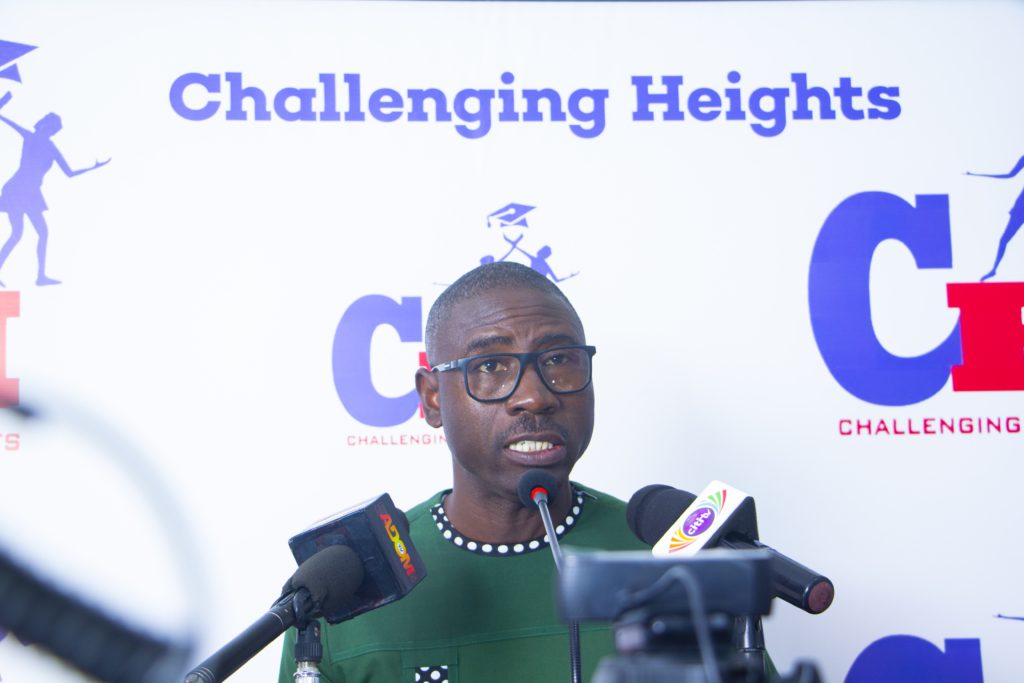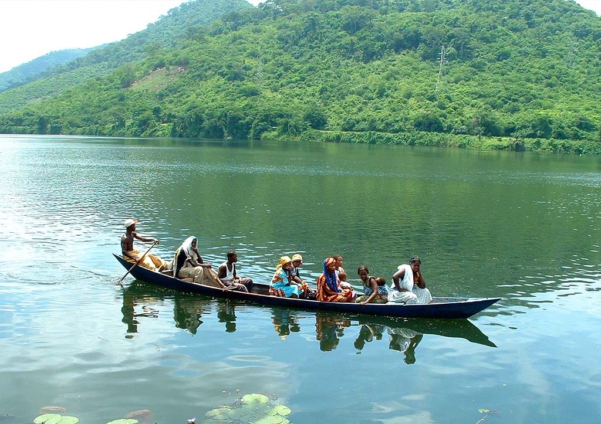Challenging Heights, a child-focused Non-Governmental Organization (NGO) has released a report that shows that approximately 60% of all children living in the fishing communities along Ghana’s Lake Volta are child labourers.
The report, which is titled “Children Hidden in Plain Sight: A Report on the State of Child Labour in the Fishing Industry of Lake Volta (Ghana)”, was released to coincide with the World Day Against Child Labour, 2022.
The World Day Against Child Labour was instituted by the International Labour Organization (ILO), and is commemorated on the 12th of June every year to draw the world’s attention to the plight of children who are going through abusive labour situations.
The theme for this year’s World Day Against Child Labour is “Universal Social Protection to End Child Labour”.
The researchers interviewed two thousand nine hundred and ninety-nine (2,999) children, made up of 1,732 males, and 1250 females. The study took place in five districts of the Lake Volta area, namely; Krachie East and West Municipalities in the Oti Region, Kpando District in the Volta Region; Pru District in the Bono East Region; and Central Gonja District in the Savannah Region.
The organization says the research took three months, between March and May, 2022, to complete and the children interviewed were divided into groups ranging from 5 to 9 years; 10 to 14 years; and 15–17 years; in line with International Labour Organization (ILO) and United Nations Children Emergency Fund (UNICEF) categorizations.
Chief Executive Officer of Challenging Heights, James Kofi Annan, explained that in the first age group between 5 and 9 years, 47% were in child labour and in the second group between 10 to 14 years, 69% were in child labour.

In addition, he explained that the third group, has children aged between 15 and 17, with 77% of them in child labour.
“This number is significantly higher than the numbers available from previous studies." There are also differences between male and female child labourers when it comes to the tasks they have to do. Among male child labourers, tasks such as paddling canoes (46%), scooping water from the boat (32%), casting (35%) and pulling nets (33%) were especially high, whereas female child labourers had higher percentages when it comes to fetching firewood (34%), cooking for the company (23%) or fish processing (35%), he stated.
He further noted that their study found that 61% of the child labourers were males and 39% were females. This, he says, is in sharp contrast with numbers provided by the ILO, which indicated that 87% of the child labourers in Ghana’s fisheries were boys, and the study by the IJM, which claims that 99.6% of the child labourers were boys.
He stated, “One possibility for the new data in our study is that not only child labourers on the lake were interviewed but also children who normally do not work so much in public. We discovered that more female children are involved in child labor than previously thought, based on different categories of labor such as cooking and fish processing, which may take place mostly behind closed doors."
According to the findings of the study, tasks vary by age group, with tasks such as scooping water (32%), fish processing (30%), and farming (42%), for example, being particularly high among 5 to 9-year-old child laborers, while tasks with more responsibility and danger, such as removing trapped nets (8%), driving outboard motors (8%), diving (14%), and mending nets (9%) being comparatively low.
He further explained that this changes with the age group of 10- to 14-year-old child labourers, who predominantly paddle canoes (37%), cast nets (30%) and pull them back (29%), farm (36%) or fetch firewood (28%).
“The oldest age group of 15-to 17-year-old children has the roles that require the most responsibility and which are more dangerous than others. They frequently paddle canoes (42%), pull nets (32%), and process fish (30%), but they also perform the most dangerous tasks, such as diving (15%) and removing trapped nets (17%), far more frequently than others," he added.
A child is classified as a child laborer in this study by Challenging Heights, if he or she was engaged in hazardous tasks and the children did work that endangered their physical or mental well-being, such as working on the lake without security and doing work like paddling, diving, or removing trapped nets.
They claim that jobs like fish processing are hazardous to children because they expose them to large amounts of smoke for long periods of time and require the use of sharp objects (knives).
"Of the 1,794 children classified as child laborers, 1,389 (77%) reported being beaten and 730 (41%) displayed signs of abuse," James Kofi Annan said.
"Of the 2,999 children interviewed for this study, 1,696 (57%) were in school, compared to 779 (43%), who were in school among child laborers (1794)." Among the non-child labourers interviewed (1205), 917 (76%) were in school. These figures can be compared to the UNESCO-published national enrollment rates.
In 2020, the primary school enrollment rate was 82.4% and the secondary school enrollment rate was at 62%. According to the figures, widespread child labor on Lake Volta is to blame for a much lower school enrollment rate on the island than in the rest of the country, he said.
As both the ILO and UNICEF have stated, the global pandemic resulted in a higher number of child laborers, Challenging Heights believes that the increased numbers of child laborers could be linked to the impacts of COVID-19.
In a June 2021 UNICEF article, the organization warned that the pandemic would put 9 million additional children at risk of becoming child laborers. This comes in addition to the already increasing numbers of child labour in sub-Saharan Africa due to “population growth, recurrent crises, extreme poverty, and inadequate social protection measures” that caused 16.6 million additional children to end up in child labour in the four preceding years.
Based on their findings, the organization recommends that parents in the country's most affected regions be educated – both in the source and destination communities; and that affected children be removed from child labor situations and placed in safe spaces such as schools, vocational and skills education, and any other developmental programs that will ensure their safety and future be implemented.
Additionally, since poverty and COVID-19 have made the economic situation of most households worse, they say policies should aim at making the economic situations of families better.
Latest Stories
-
NPP must win back Adentan seat in 2024 polls – Obeng Fosu
6 mins -
PPA Clarification: The dark side of the World Bank’s ‘giveaways’ in Ghana by Bright Simons
1 hour -
Blinken says China helping fuel Russian threat to Ukraine
2 hours -
MHA declares May as Purple Month for Mental Health Awareness
2 hours -
WAEC arrests former headmaster over illegal students registration
2 hours -
MeToo founder Tarana Burke defiant after Harvey Weinstein ruling
2 hours -
Be alert, insist on decent messages – Dwumfour tells media
3 hours -
Father jailed 10 years for burning daughter’s genitals with hot cutlasses
3 hours -
I aim to help Ghana produce world-class athletes – Asamoah Gyan
3 hours -
Ashanti Regional Minister alleges sabotage in electricity supply
3 hours -
2024 Elections: Dampare urges Ghanaians to prioritise patriotism and display maturity
3 hours -
‘Let it rot’ campaign hits fish prices in Egypt
3 hours -
Otumfuo chalks 25 years on Golden Stool today
4 hours -
Saudi could get first Miss Universe contestant this year
4 hours -
Ghana Shippers’ Authority initiates steps to sign Service Level Agreements with stakeholders
4 hours

